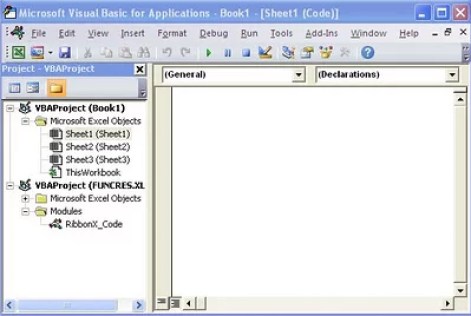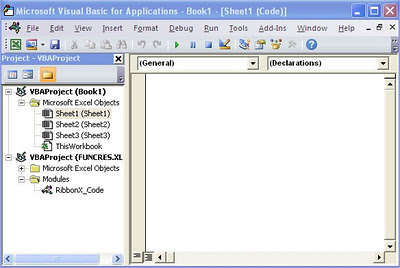How to Use Visual Basic Editor in Excel
This guide introduces the Visual Basic Editor in Excel, where you can edit recorded macros and write new VBA code (Visual Basic for Applications). This is practically relevant workshop in which you write code programs.
Run the Editor
To run the Visual Basic Editor, you can use several ways:
- The Excel Ribbon, choose Developer and Visual Basic;
- Being in the Excel spreadsheet you can use Alt + F11 keyboard shortcut;
- The Visual Basic Editor includes several sections (or windows), which are described in detail below.

To close the Visual Basic Editor can also be used several ways:
- From the File menu, click Close and Return to Microsoft Excel;
- You can use Alt + Q keyboard shortcut;
- You can close the editor as we close every window.
Project Window
The Project Explorer window in VBA looks and works like Windows File Explorer. It displays a hierarchical list of all VBA components in your project and lets you navigate between them easily. To open the Visual Basic Editor Project window
- From the View menu, choose the option Project Explorer;
- You can use Ctrl + R keyboard shortcut;
- Click Project Explorer on the toolbar (standard).

The upper part of the window contains three buttons:
- View Code – opens the code module in the selected object;
- View Object – we can use this button to open a selected object in the window, for example, form or return to the Excel spreadsheet if it is selected (as shown above);
- Toggle Folders – Folders hides or shows objects being constantly visible are contained in these individual elements. If we remove the folders, objects are displayed in alphabetical order.
Properties Window
The Properties window in VBA shows the attributes of the selected object. You can modify properties here to change the behavior or appearance of the object. To the editor to display the Properties window:
- Press the F4 key;
- From the View menu, select Properties Window option;
- Click the Properties Window button on the toolbar (standard).

In the upper part of the window’s drop-down list. This list gives the opportunity to select an object (by clicking on the arrow), whose properties you want to view. You can view object properties in the VBA editor alphabetically or by category using the two tabs in the Properties window.
The left column of each of the cards (as viewed from the user) is a set of parameters specifying the names of your element, while the right side is the size and characteristics of these parameters.
Code Window
The Code window in Excel VBA is used to write, view, and edit your Visual Basic for Applications code. This window is probably the most often used by us. You can open as many windows as a program code to the modules.
To the editor, open the code window, in the Project window, double-click the left mouse button the object. Another way is to select the corresponding object in the Project window and then:
- From the menu select View Code;
- Press the F7 key;
- Click the View Code icon in the Project window;
- Click the object, right-click context menu and select View Code.

Components
In the upper part of the window we can distinguish two components:
- Field (drop-down) Object – is on the left (as viewed from the user) and the window shows a list (by clicking on the arrow) related objects. If the drop – down list select the name of the object Object, the VBA procedure creates a default template for this object;
- Field (drop-down) Procedure – the right of the window shows a list of possible events associated with the selected object in the Obiect.
It should be mentioned are the two buttons located at the bottom left of the window. Procedure View button that displays only the chosen procedure. The second button displays the Full Module View all of the code module. Between the windows described above, we can provide some dependencies:
- If you change the selection in the Project window, the Properties window, change will be similar;
- When in the Project window, double-clicked the left mouse button on the specified object, open the Code window (module code) of the object;
- When you have several windows open code, when switching from one window to another similar code change will occur in the Project Window and in the Properties window.





Leave a Reply